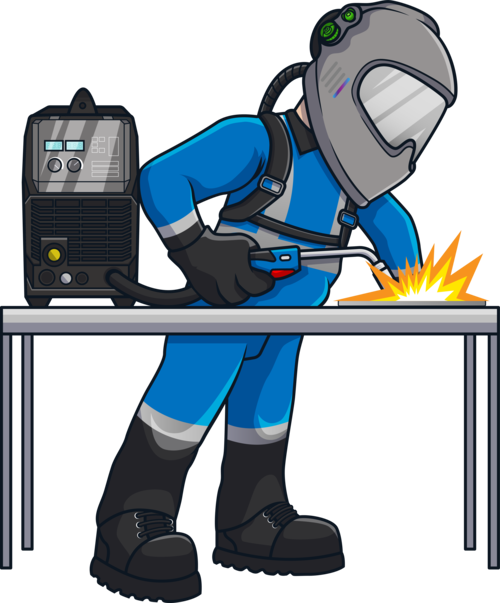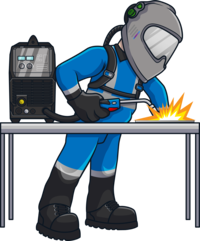Table of Contents
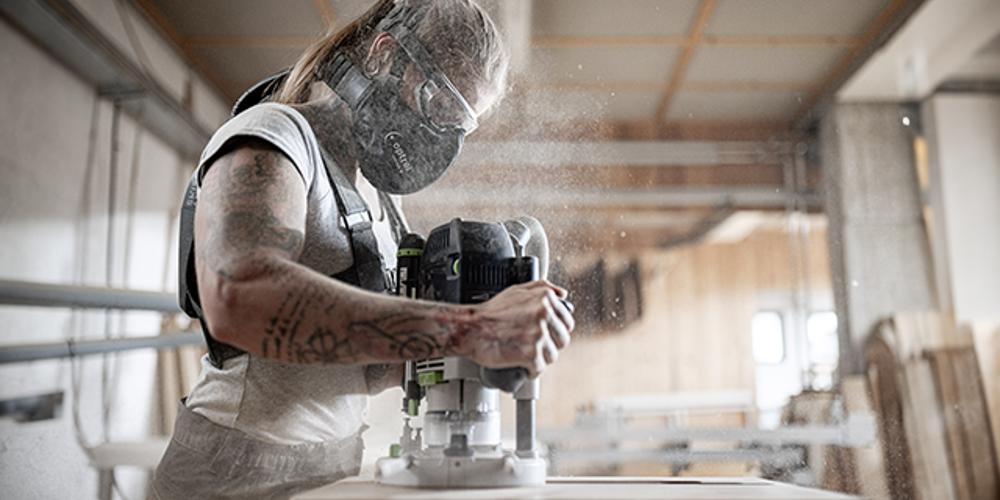
Respiratory protection is not just a preference in any industrial workspace, from welding bays to woodworking shops—it’s necessary. But with so many respirator types available—P1, P2, P3, N95, KN95 and TH3—it’s easy to get confused. What do these ratings mean? Which mask is best for a particular job? And how can professionals ensure they’re using the correct level of protection?
This guide explains the differences in respirator standards, highlights how each applies in real-world industrial environments, and explores certified product solutions from Proline Industrial that can help Kiwi professionals work safer and breathe easier.
What Are P1, P2, and P3 Ratings?
Under the AS/NZS 1716 standard, New Zealand and Australian respirators are classified into P1, P2, and P3 levels. Each rating corresponds to a different filtration efficiency and use case.
P1 – Basic Dust Protection
P1 filters are designed for large, mechanically generated particles like dust from sanding or sawing untreated timber. They filter at least 80% of airborne particles and are suitable for low-risk environments with coarse particles. While they offer basic protection, P1 masks are rarely used in industrial settings with finer particles or fumes.
P2 – Fine Dust and Fume Protection
P2 masks filter at least 94% of airborne particles. They offer protection from mechanically and thermally generated particulates, such as welding fumes, bushfire smoke, and sub-micron dust. This makes P2 respirators suitable for grinding, cutting, or welding, where finer particles are inhaled. They also defend against biologically active particles like viruses and bacteria, making them versatile for various industries.
P3 – Maximum Filtration for Hazardous Exposure
P3 respirators filter at least 99.95% of airborne particles and are intended for high-risk environments involving extremely fine or toxic particles, including asbestos, heavy metals, or radionuclides. However, to achieve complete P3 protection, the filter must be used with a full-face respirator or a Powered Air-Purifying Respirator (PAPR), as half-face masks alone do not maintain the seal and coverage needed for P3 compliance.
How Do N95 and KN95 Filters Compare?
The N95 rating falls under the NIOSH standard in the United States and Canada. N95 respirators offer a minimum 95% filtration efficiency, aligning them closely with the P2 standard used in New Zealand. For practical purposes, P2 and N95 masks provide equivalent protection and can often be used interchangeably in industrial settings.
KN95 masks, governed by Chinese standards, also claim 95% filtration efficiency. However, their quality can vary, especially when not certified through trusted supply chains. For guaranteed protection in New Zealand, it’s recommended to use masks certified under AS/NZS, NIOSH, or EN standards to ensure regulatory compliance and user safety.
Disposable vs Reusable Respirators
Disposable Respirators
Disposable P2 or N95 masks are standard in workshops for convenience and cost-effectiveness. These are ideal for short-term tasks or situations where contamination risk is high. However, they must be disposed of after each use or once they become clogged or damaged.
The Esko Breathe Easy P2 Carbon Filter Valved Mask is a reliable disposable solution. It offers dual protection with a P2 filtration layer and an activated carbon filter. Its AIR8™ exhalation valve improves comfort and airflow, making it ideal for prolonged use in hot or physically demanding environments. Supplied in a pack of 12, these masks are colour-coded for easy identification and feature adjustable straps for a secure fit.
Reusable Respirators with Replaceable Filters
Reusable respirators are constructed from silicone or rubber and are designed to be used with replaceable filter cartridges. They offer a durable and cost-efficient alternative to disposable masks, particularly for regular use in dusty or hazardous environments.
The Promax P3 Welding Filter (2 Pack) is an excellent example of replaceable filters. These filters are designed for use with Promax half masks and are compatible with the 6200 and 7500 series masks, which are ideal for capturing welding fumes, dust, and smoke. High-efficiency activated carbon filtering offers FFP3-level protection when used with suitable full-face or powered systems. Bulk pricing is available for orders of ten or more, making them a practical choice for busy workshops.
Valved vs Non-Valved Masks: Which Is Right for Your Workplace?
Many disposable and reusable respirators come with an exhalation valve. The valve allows exhaled air to escape more easily, reducing heat buildup and moisture inside the mask. This feature improves comfort and helps prevent fogging on safety glasses or face shields. However, it’s important to note that valves do not affect the mask’s filtration level. A P2 mask with a valve offers the same protection as one without. One limitation is that valves expel unfiltered air when exhaling, which is unsuitable in environments where outward contamination (e.g. virus control) must be avoided. In most industrial settings, however, a valved mask is acceptable and often preferable for comfort during long shifts.
The Importance of Fit and Seal
Even the best-rated filter can be rendered ineffective without a proper seal. Respirators must form a tight, uninterrupted seal with the skin to ensure that inhaled air passes through the filter material rather than leaking through gaps.
Facial hair, poor strap adjustment, or an incorrectly sized mask can all compromise the seal. Reusable respirators often offer a better fit due to moulded silicone facepieces and adjustable headbands, making them suitable for those with facial hair. For tasks requiring the highest level of filtration (P3 or above), performing a fit check or undergoing a professional fit test where appropriate is essential.
What About Powered Respirators (PAPRs)?
Powered Air-Purifying Respirators (PAPRs) offer the best of both worlds for professionals seeking maximum protection with minimum discomfort. These systems use a battery-powered fan to draw air through high-efficiency filters and deliver it to the user’s face via a half-mask or full-face helmet.
One outstanding example is the Optrel Swiss Air PAPR Multi-Use Respiratory System, bundled with the Clearmaxx Grinding Helmet. This TH3-rated system offers 99.8% filtration efficiency and is designed for long-term wear. It has a 14-hour battery life and positive pressure that supports natural breathing without resistance.
Key features include:
- Flame-retardant half-mask with adjustable airflow and fit
- Central control panel with real-time status updates
- Lightweight, ergonomic design
- Compatibility with any welding helmet
- Beard-friendly fit without the need for a traditional face seal test
The ventilated half-mask ensures a consistent supply of clean air directly to your mouth and nose. Unlike traditional systems that rely on tight facial seals or frequent fit tests, Swiss Air’s freely adjustable head harness and high-tech flame-retardant fabric adapt to your individual face shape, including for users with beards. Automatic airflow calibration and environmental compensation (for altitude and temperature) make it a smart, set-and-forget solution for full-day protection in fluctuating conditions.
This system is ideal for demanding environments such as metal fabrication, agriculture, construction, or the food industry, where particulate and vapour hazards may exist. The Swiss Air kit offers excellent protection and comfort for professionals regularly exposed to welding fumes, paint mist, or airborne dust.
Check out the Optrel Swiss Air mask in action HERE.
Matching Protection to the Task
Selecting the correct respirator depends on the type of airborne hazards involved:
| Task | Recommended Respirator |
| Sanding, drilling untreated timber | P1 Disposable Mask |
| Welding, grinding, and cutting steel | P2 Mask or Reusable P2 Filter |
| Paint spraying or solvent exposure | P2 with activated carbon |
| Asbestos, lead, and toxic particles | P3 filter with full-face mask or PAPR |
| Long shifts in high-fume areas | PAPR (TH3 rated, e.g. Optrel Swiss Air) |
When in doubt, choose a higher-rated filter. P2 should be considered the minimum standard for most industrial workplaces, while P3 or TH3 protection is essential in high-risk scenarios. Disposable masks suit light or short-duration tasks, whereas reusable and powered systems are ideal for frequent, high-exposure work.
Certified Safety Only
Always ensure the mask or filter you use carries a legitimate certification. Look for markings such as:
- AS/NZS 1716 (Australia/New Zealand)
- NIOSH N95 (USA)
- EN149 FFP2 or FFP3 (Europe)
Avoid unlabelled or counterfeit products, especially KN95 masks without proper documentation. Proline Industrial only supplies certified, tested respiratory protection designed for New Zealand workplaces.
Choose the Right Respirator for Safer Work
Understanding the differences between P1, P2, P3, N95, and TH3 respirators empowers professionals to make informed choices about respiratory protection. Whether grinding, welding, or spraying paint, the right mask protects your lungs from harmful particles.
The Esko P2 mask with a carbon filter offers comfort and compliance for those needing disposable efficiency. If reusable gear is preferred, the Promax P3 filter cartridges provide high-level protection when matched with the correct mask. And for the ultimate in convenience, filtration, and wearability, the Optrel Swiss Air PAPR system represents best-in-class respiratory defence.
Ready to breathe easier?
Visit Proline Industrial’s respiratory protection range online or contact our team for expert advice on the right mask for your job. With certified products, bulk pricing, and NZ-based support, you can work safely and smarter daily.













































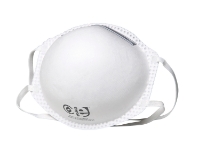
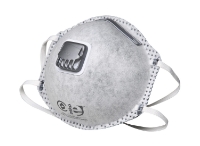
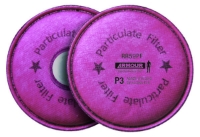
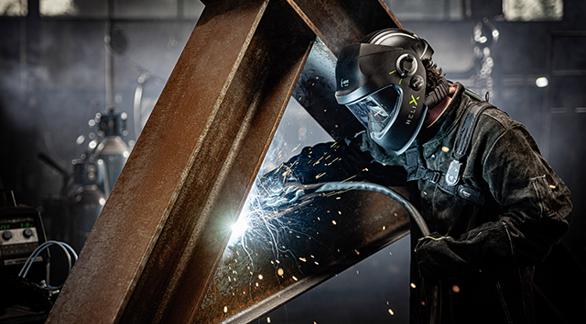
.jpeg)
